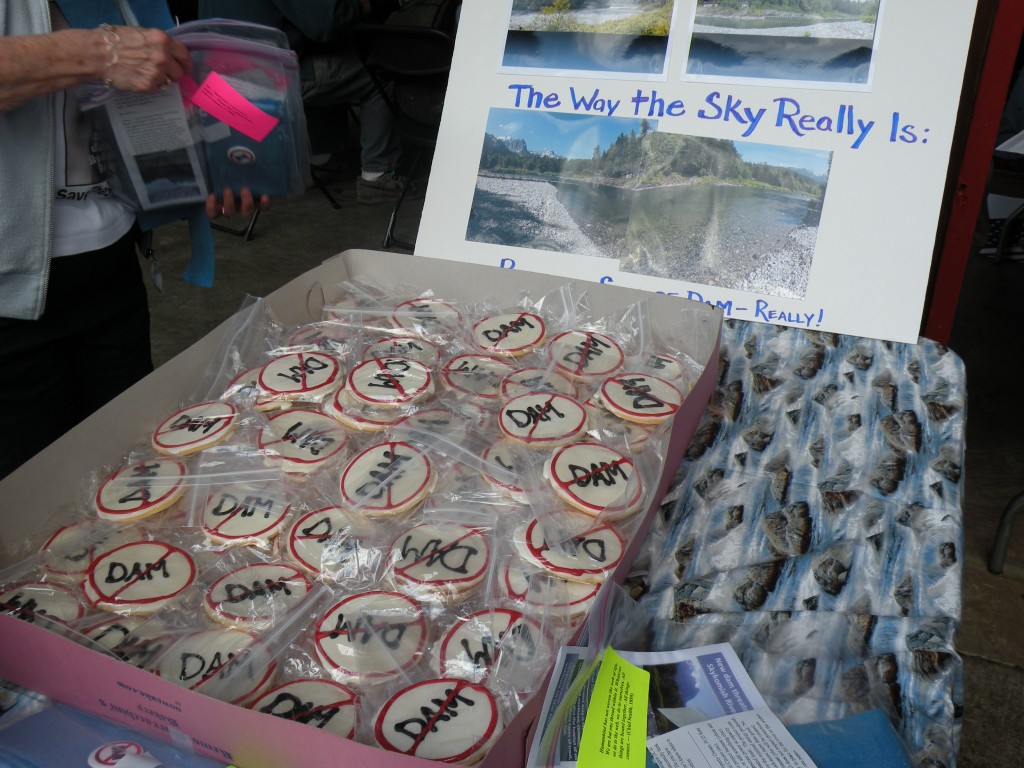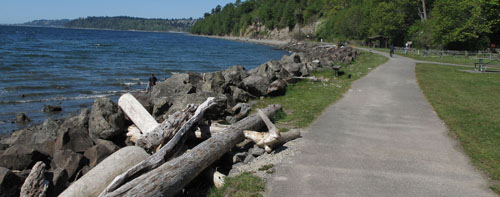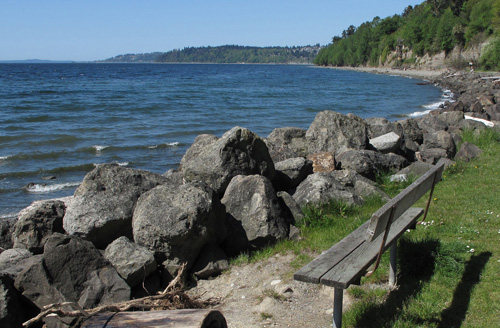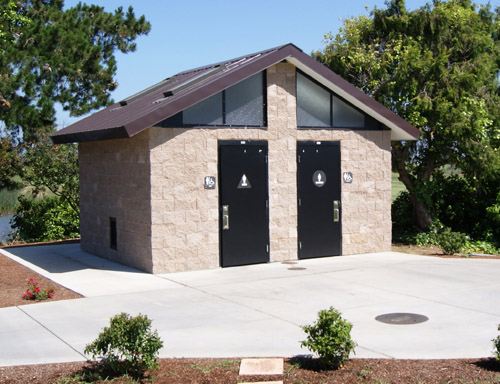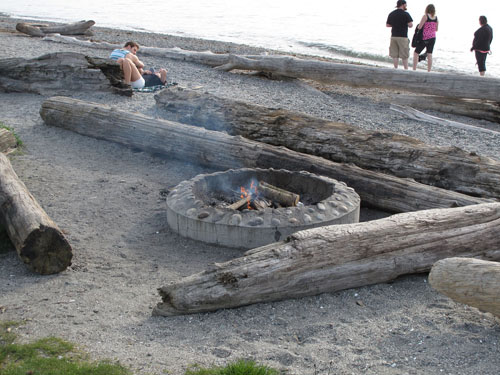Elise Krohn, Northwest Indian College herbalist and educator
Nettles are one of our favorite plants because they are so nutritious and so delicious. Late spring is the perfect time to harvest nettles and dry them for tea. Later in the summer fibrous stems can be made into strong cordage.
Description: Stinging nettle (scientific name Urtica) is a perennial herb with opposite deep green leaves with serrated edges and tiny greenish flowers. Stems are square like mint. Nettle grows 3-7 feet tall. The stalk and underside of leaves are covered with stinging hairs that rise from a gland containing formic acid. Nettle is common in streambeds and disturbed areas with rich wet soil from the coast into the mountains. Do not gather nettles in agricultural or industrial areas because they may absorb inorganic nitrites and heavy metals.
Nettle contains: Formic acid in fresh plant, galacturonic acid, vitamin C, histamine, 5-hydroxytryptamine, choline and acetylcholine, vitamins A and D, iron, sodium, potassium, phosphorus, calcium, silica, trace minerals and a good amount of protein (more than beans!).
How to Harvest: Gloves or scissors are usually used to harvest nettles. Nettles are most potent when gathered in early spring before flowering, usually from March-May. To dry nettles, bundle them and hang them upside down in a dark dry place, or place them in a paper bag and rotate them every few days until dry. Strip the leaves off the stem and store away from sunlight. Stems are gathered for fiber when the plant is mature in summer to early fall.
Historic uses
Nettles have been revered worldwide throughout the ages for food, fiber and medicine. Many Northwest Coastal People traditionally ate nettles as a nutritious spring food. They were also used as a dye with shades ranging from yellow to deep green. The fiber makes strong cordage and was used for making strong fishing line and fishnets. Two thousand-year-old nettle clothing was found in China and still remains intact.
A fascinating use for nettles is urtication, or flogging oneself with this stinging plant. Both in the Pacific Northwest and in Europe, people have stung themselves to cure arthritic joints and to stay awake and alert during battle or hunting. Traditional knowledge is now validated by scientific research. Compounds including histamine, acetylcholine and formic acid are injected into tissue causing an awakening of cellular responses, lymph flow, nerve stimulation and capillary stimulation.
Food
Nettles are impressively high in chlorophyll, vitamins, minerals, protein and amino acids. They are often called a “superfood” and are one of the highest plant sources of digestible iron. This can be helpful for anemic conditions, menstruation, pregnancy and lactation. Gather nettles to eat fresh before they flower as old leaves contain cystoliths that may irritate the kidneys. This compound is destroyed when the plant is dried, so gathering nettles after flowering is fine to prepare dried herb tea or powder, although leaves are most potent before flowering. There are many ways to prepare nettles for food including:
Boil – boil nettles for 5-15 minutes. The water can then be drunk as a tea.
Can – follow general instructions for canning spinach.
Freeze – either steam or boil nettles until just cooked, rinse in cold water, let drain and place in freezer bags for later use.
Sauté – Sauté until they look fully cooked, usually about 5 minutes.
Steam – place nettles in a colander and steam for 5-10 minutes.
Cooked nettles can then be used in quiches, casseroles, meat pies, egg scrambles, etc. Dried nettles can also be added to soups and other foods in the same way dried herb and spices would be. They are a delicious addition to clam chowder
Wash nettles, cut finely with scissors and set aside. In a large soup pot, sauté onions and garlic in olive oil or 3-5 minutes. Add water, potatoes, corn and nettles, then bring to a boil. Simmer until potatoes are tender, about 10 minutes. Blend all ingredients in a blender or a food processor (optional). Add lemon juice, salt and pepper to taste.
Nettle Pesto
Try tossing this with pasta, potatoes or cooked vegetables. It can also be spread on crackers or fresh vegetables as a snack.
1 small bag (about 6 cups) of young fresh nettles, rinsed
1 bunch basil, stems removed, washed and drained (about 2 cups leaves)
½ cup Parmesan or Romano cheese, grated
1/3 cup walnuts or pine nuts
1/3 cup of extra virgin olive oil
I clove garlic, chopped
1 teaspoon lemon juice
Salt and pepper to taste
Boil nettles in water (blanch) for one minute to remove the sting. Drain well, let cool and roughly chop. Place all ingredients in a food processor or blender. Blend until smooth. Add salt and pepper to taste. Place the pesto in a clean jar and pour a little extra olive oil over the top. Cover with a lid. This will keep for 2-3 weeks in the refrigerator.
Green Sesame Salt
1 cup sesame seeds
¼ cup powdered nettles
2 teaspoons salt
Toast sesame seeds over medium heat in a dry pan. They will pop, brown, and when done, will have a toasted aroma and deep golden appearance. Grind with salt in a coffee grinder or blender. Add nettle powder (this can also be ground in a coffee grinder). Blend all ingredients and store in a glass jar in the refrigerator. This condiment can be sprinkled on rice, sautés or soups.
Medicine
Nettles can help bring the body back to a state of balance. If someone is feeling debilitated or generally worn down, nettles are a good remedy. They are tonic to the liver, blood and kidneys. Herbalists consider nettles a reliable diuretic that balances blood pH and filters waste from the body including uric acid. This can be especially useful for arthritis, gout, eczema and skin rashes. Nettles have a solid reputation as a haemostatic, or a remedy to stop bleeding. A strong decoction is traditionally used to treat wounds and hemorrhage. They can help build blood after menstruation, birth or other blood loss.
Many people say that nettles help to alleviate allergies. As a preventative for hay fever, drink 2 cups of nettle tea a day starting early in the spring and continuing into the allergy season. When nettles are fresh, tinctured or freeze-dried they have anti-histamine qualities that may be effective for acute allergic reactions. Nettles are both astringent and anti-inflammatory, which helps with the symptoms of allergies and many other complaints. Rosemary or horsetail with nettle are made into a tea and used as a hair rinse to make the hair glossy and stimulate growth.
Tea: Use 1 tablespoon of dried nettles per cup of boiled water. Steep 15 minutes to several hours. Drink 1-3 cups a day. You can make a large batch of tea and keep it in the refrigerator for up to 3 days. It is fine to drink the tea hot or cold. Nettle blends well with mint.
Fiber
Nettle fiber is renowned for it’s durability and has been used for making fishnets, ropes, clothing, and even bed linens. Cut stems at the base and strip the leaves from the stem (wear thick gloves). If you are working with fresh nettles, split the stems in half, cutting length-wise with a sharp knife. Take a rolling pin or round stick to flatten the half-stems. You can even beat them with a stick or a flat rock to help separate the outer fiber from the inner woody stem. Carefully separate the outer fibers, trying to keep them long. Let these fibers dry in a basket or a paper bag. If you are working with dry nettle stems you can soak them to make them easier to work with. Continue as above by splitting the stems, flattening them and carefully removing the fiber. The fiber can then be braided or twisted and made into strong cordage.

















 The
The 


